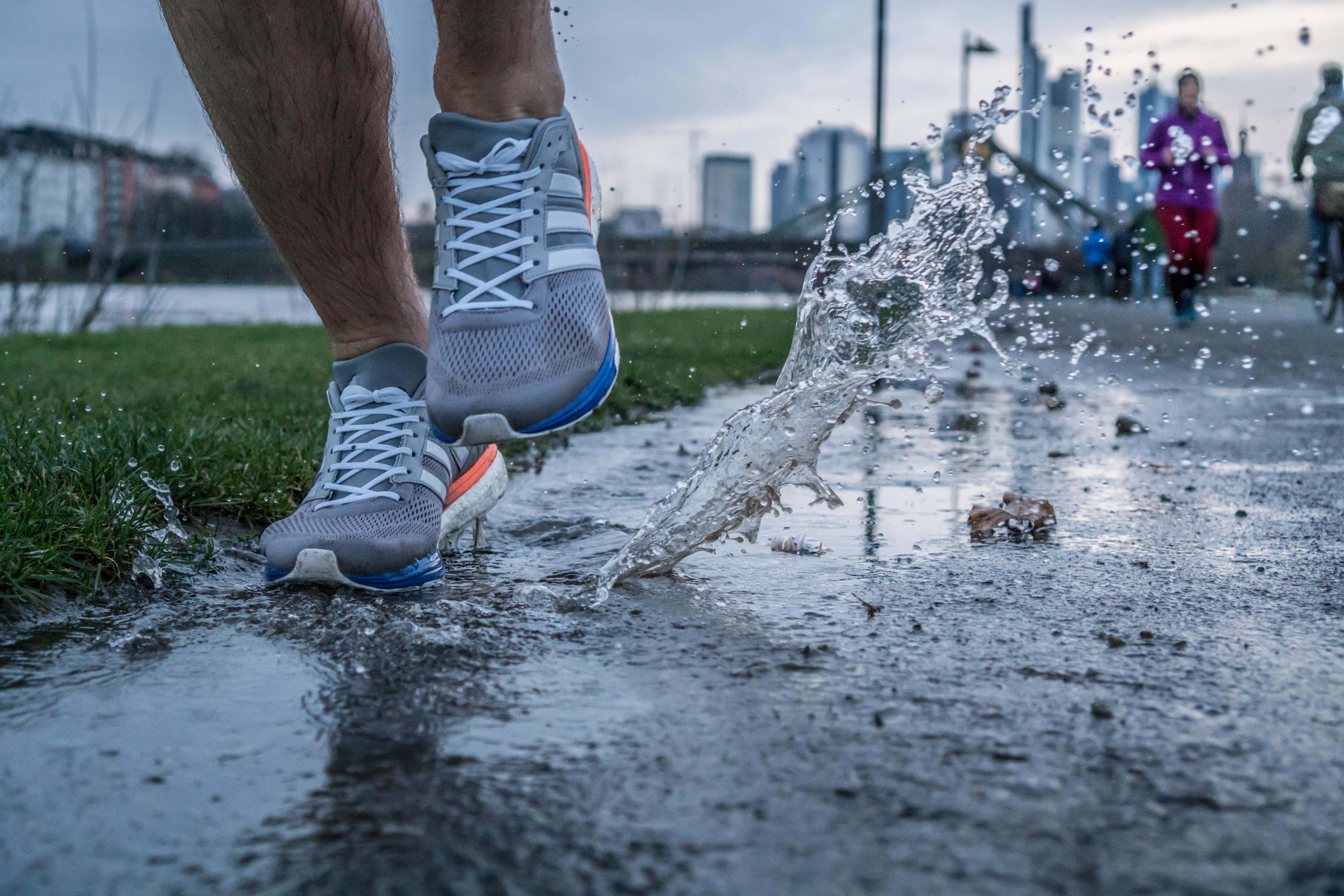The Independent's journalism is supported by our readers. When you purchase through links on our site, we may earn commission.
Is it safe to go running in the rain?
Fitness pros outline the key things to think about. By Abi Jackson.

Your support helps us to tell the story
From reproductive rights to climate change to Big Tech, The Independent is on the ground when the story is developing. Whether it's investigating the financials of Elon Musk's pro-Trump PAC or producing our latest documentary, 'The A Word', which shines a light on the American women fighting for reproductive rights, we know how important it is to parse out the facts from the messaging.
At such a critical moment in US history, we need reporters on the ground. Your donation allows us to keep sending journalists to speak to both sides of the story.
The Independent is trusted by Americans across the entire political spectrum. And unlike many other quality news outlets, we choose not to lock Americans out of our reporting and analysis with paywalls. We believe quality journalism should be available to everyone, paid for by those who can afford it.
Your support makes all the difference.With flood warnings and heavy rain across the country, and reports of more wet and wintry weather on the way – what does this mean for your running regime?
Running outdoors can need adjustments during autumn and winter anyway, with less daylight and temperatures dropping, and rain can throw a number of additional considerations into the mix.
Not only is there comfort and visibility to think about, but the ground can be much more slippery than usual, potentially making injuries and falls a bigger risk.
So, can you carry on with your usual running routine when it’s raining?
Consider the conditions
First and foremost, what sort of rain are we talking about? There’s a big difference between a bit of drizzle and a storm or flood warning, for example – so always check the local reports in your area and make an informed decision that’s right for you.
“Running in the rain can feel invigorating for many runners,” says Jade Imani, personal trainer and running coach with Insure4Sport.
“The cooler weather often reduces the chance of overheating, allowing for longer or more comfortable runs. Rain can also provide a refreshing contrast to regular conditions, breaking up monotony and offering a new mental challenge.
“Some runners even find the rain calming, as it can create a meditative, focused environment with fewer distractions or people around.”
The key is preparation and the right gear...
Kris King, ultra runner, coach and owner/director of Beyond The Ultimate ultra events, which hosts events in a range of extreme environments, says rain doesn’t automatically mean you should “stop training” – but it is “a factor to consider”.
“Many runners maintain their routines effectively through winter and rainy seasons without major issues,” King adds.
“The key is preparation and the right gear. By gradually adjusting your routine to include running in the rain, you can adapt while minimising discomfort.”
Know when it’s best to play safe
There are certain times when any workout just isn’t worth the risk. While it might be frustrating to skip a day if you’re on a steady streak, remember that’s much better than twisting an ankle or busting a ligament and being out of action for much longer.
“While running in light or moderate rain can be enjoyable, there are certain times when it’s safer to skip the run. Be cautious if there’s heavy rain that could reduce visibility, both for you and drivers, or if it’s accompanied by strong winds, which can make running difficult and dangerous,” says Imani.
“Avoid running in thunderstorms or when there’s lightning. Also, surfaces can become slick with mud, leaves or ice, increasing the risk of slipping and injury. If you notice large puddles, flooding or reduced traction, it’s a good idea to postpone or move your run indoors.”
Preparation is key
“Running in the rain poses two potential risks: getting too cold and reduced visibility,” King says. “Exposure to the cold and rain will lower your body temperature, leading to discomfort or even hypothermia in extreme conditions. Low visibility, both for runners and surrounding traffic, increases the risk of accidents.”
And remember, it’s about what’s best for you – which might be different from what someone else is doing. This means thinking about your own usual training style, fitness, comfort and suitable kit.
“At Beyond the Ultimate we host multi-stage events in extreme environments, so are very much of the mindset that training can continue with the right gear, precautions and preparation in most elements,” adds King. “To mitigate these risks, wearing a reliable waterproof jacket that provides insulation and keeps you dry is crucial.”
Suitable kit
Imani agrees the right kit “is essential for both comfort and safety” if you’re thinking of running in wet weather.
“Hi-vis gear and reflective elements are non-negotiable when visibility is reduced, such as in the rain or dark. These make you more visible to traffic and other runners. Waterproof clothing is also a must to keep you warm and dry, but it’s important to find breathable fabrics to avoid overheating.
“In addition, running shoes with good grip will help you maintain traction on slippery surfaces, reducing the chance of falls. A headlamp or reflective bands can be helpful if you’re running in areas with minimal lighting.”
Stay close to home
If you’ve scoped out the conditions and are confident about setting out for a run, now probably isn’t the time to be exploring new and unfamiliar routes or venturing anywhere remote.
“When running in unpredictable weather, it’s wise to stay near home or familiar routes,” says King. “This allows for a quick return in case the weather worsens, or your gear fails. Small adjustments, like shorter loops or more frequent check-ins, help you stay safe while maintaining your training.”